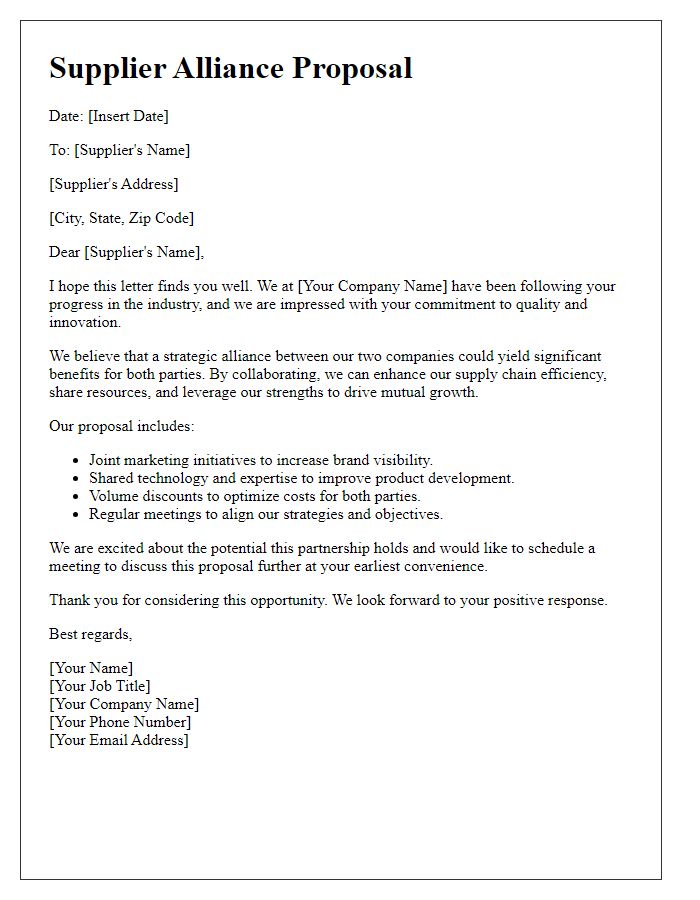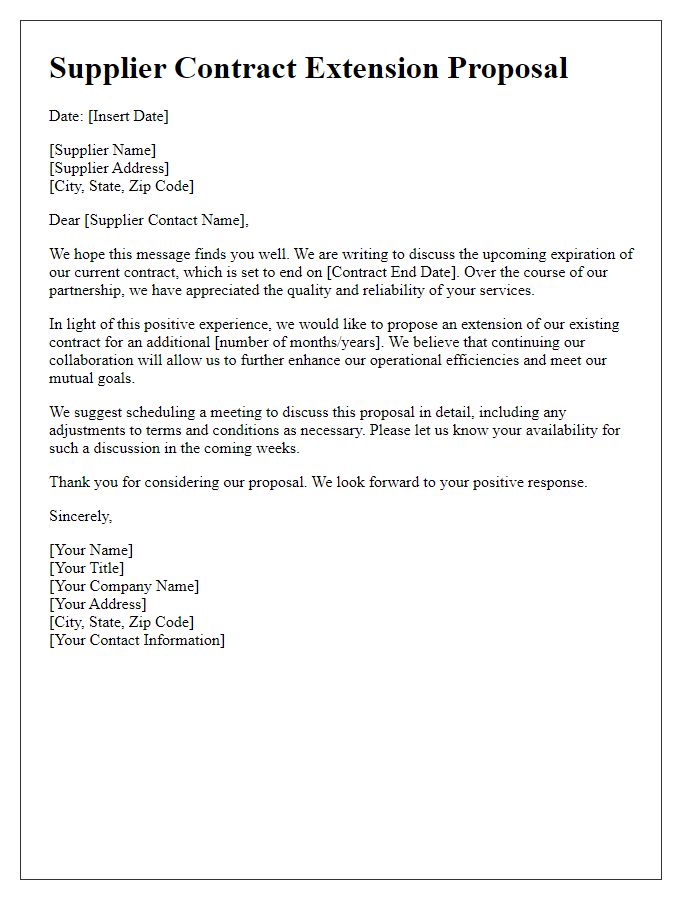When it comes to fostering strong business relationships, a well-crafted letter can set the tone for a successful long-term partnership with your supplier. In this letter, we'll outline the benefits of collaboration, highlighting mutual growth and innovation while demonstrating our commitment to creating a win-win scenario. By sharing our vision and outlining key strategies, we aim to strengthen our alliance and achieve greater heights together. So, let's take the first step towards building a fruitful partnershipâread on to discover how we can work together for lasting success!

Clear introduction and purpose statement
A long-term partnership proposal with a supplier is vital for growth and collaboration in today's competitive market. This proposal aims to establish a mutually beneficial relationship that fosters innovation, enhances supply chain efficiency, and drives profitability. By aligning our strategic goals and leveraging each other's strengths, the partnership can lead to improved product quality, optimized costs, and greater market reach. The objective is to create a framework for sustained collaboration that incorporates shared values, transparent communication, and a commitment to excellence in service delivery.
Mutual benefits and synergy
Establishing a long-term partnership with suppliers presents significant opportunities for mutual benefits and synergy. By collaborating with key suppliers in sectors such as textiles, electronics, or raw materials, companies can streamline their supply chain management, reducing costs while enhancing product quality. Successful partnerships can lead to co-development initiatives, where both parties can invest in innovation, creating competitive advantages in the market. Strategic alliances can also facilitate access to new technologies or exclusive materials, fostering differentiation. Additionally, long-term commitments, such as multi-year contracts or joint ventures, can enhance stability and predictability in supply, ultimately benefiting both parties' financial performance and positioning within the industry.
Demonstration of value and reliability
Crafting a long-term partnership proposal with a supplier involves demonstrating the value and reliability you bring to the relationship. A clear outline of mutual benefits can establish a strong foundation. Start by detailing your company's industry standing, including relevant statistics, such as annual revenue (e.g., $5 million) and market share (e.g., 15% in the local sector). Highlight successful past collaborations with other suppliers that resulted in increased efficiency, e.g., reducing lead times by 30%. Include specific upcoming projects that require consistent quality and timely delivery, emphasizing forecasts, such as expanding product lines by 25% next year. Reinforce your commitment to reliability by showcasing KPIs (key performance indicators), such as a 98% on-time delivery rate over the last two years. Wrap up by expressing interest in discussing joint marketing opportunities or incentives that can enhance both parties' growth trajectories.
Commitment to quality and standards
A long-term partnership with suppliers emphasizes a commitment to quality and standards, crucial for maintaining competitive advantages in industries such as manufacturing and retail. Establishing benchmarks like ISO 9001 certification ensures adherence to quality management principles, facilitating continuous improvement and customer satisfaction. Regular audits and performance evaluations can help identify areas for enhancement, fostering a culture of excellence across all operations. Furthermore, incorporating sustainable practices enhances brand reputation, aligning with the growing consumer demand for eco-friendly products. By investing in joint training initiatives for staff, both parties can ensure skilled handling of advanced technologies, ultimately leading to increased efficiency and innovation.
Flexible terms and collaboration scope
Building a long-term partnership with your supplier involves establishing flexible terms and a broad collaboration scope to adapt to evolving market demands. A mutually beneficial agreement can include variable pricing structures based on order volume, allowing for scalability as demand fluctuates. Emphasizing open communication fosters a transparent relationship where both parties can discuss logistical challenges and share innovative solutions. Regularly scheduled reviews, perhaps quarterly, can evaluate partnership dynamics and optimize efficiency. Additionally, incorporating joint marketing initiatives could enhance brand visibility for both stakeholders, leading to increased market share. Foresight into future operations and innovations will also position both the supplier and buyer for sustained success in their respective industries.
Letter Template For Supplier Long-Term Partnership Proposal Samples
Letter template of strategic partnership proposal for supplier engagement.

Letter template of supplier commitment agreement for extended partnership.












Comments